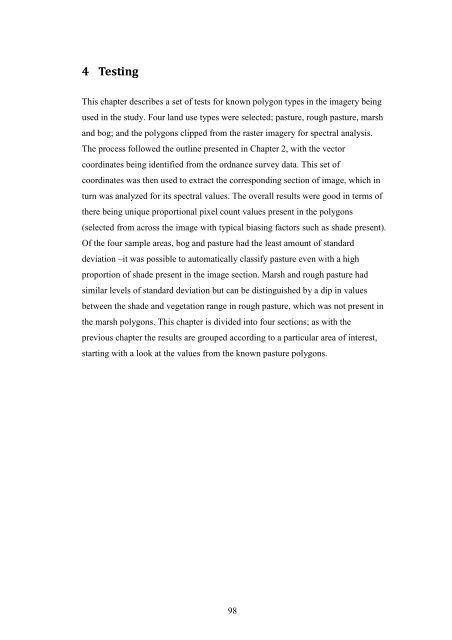You also want an ePaper? Increase the reach of your titles
YUMPU automatically turns print PDFs into web optimized ePapers that Google loves.
4 Testing<br />
This chapter describes a set of tests for known polygon types in the imagery being<br />
used in the study. Four land use types were selected; pasture, rough pasture, marsh<br />
and bog; and the polygons clipped from the raster imagery for spectral analysis.<br />
The process followed the outline presented in Chapter 2, with the vector<br />
coordinates being identified from the ordnance survey data. This set of<br />
coordinates was then used to extract the corresponding section of image, which in<br />
turn was analyzed for its spectral values. The overall results were good in terms of<br />
there being unique proportional pixel count values present in the polygons<br />
(selected from across the image with typical biasing factors such as shade present).<br />
Of the four sample areas, bog and pasture had the least amount of standard<br />
deviation –it was possible to automatically classify pasture even with a high<br />
proportion of shade present in the image section. Marsh and rough pasture had<br />
similar levels of standard deviation but can be distinguished by a dip in values<br />
between the shade and vegetation range in rough pasture, which was not present in<br />
the marsh polygons. This chapter is divided into four sections; as with the<br />
previous chapter the results are grouped according to a particular area of interest,<br />
starting with a look at the values from the known pasture polygons.<br />
98
















